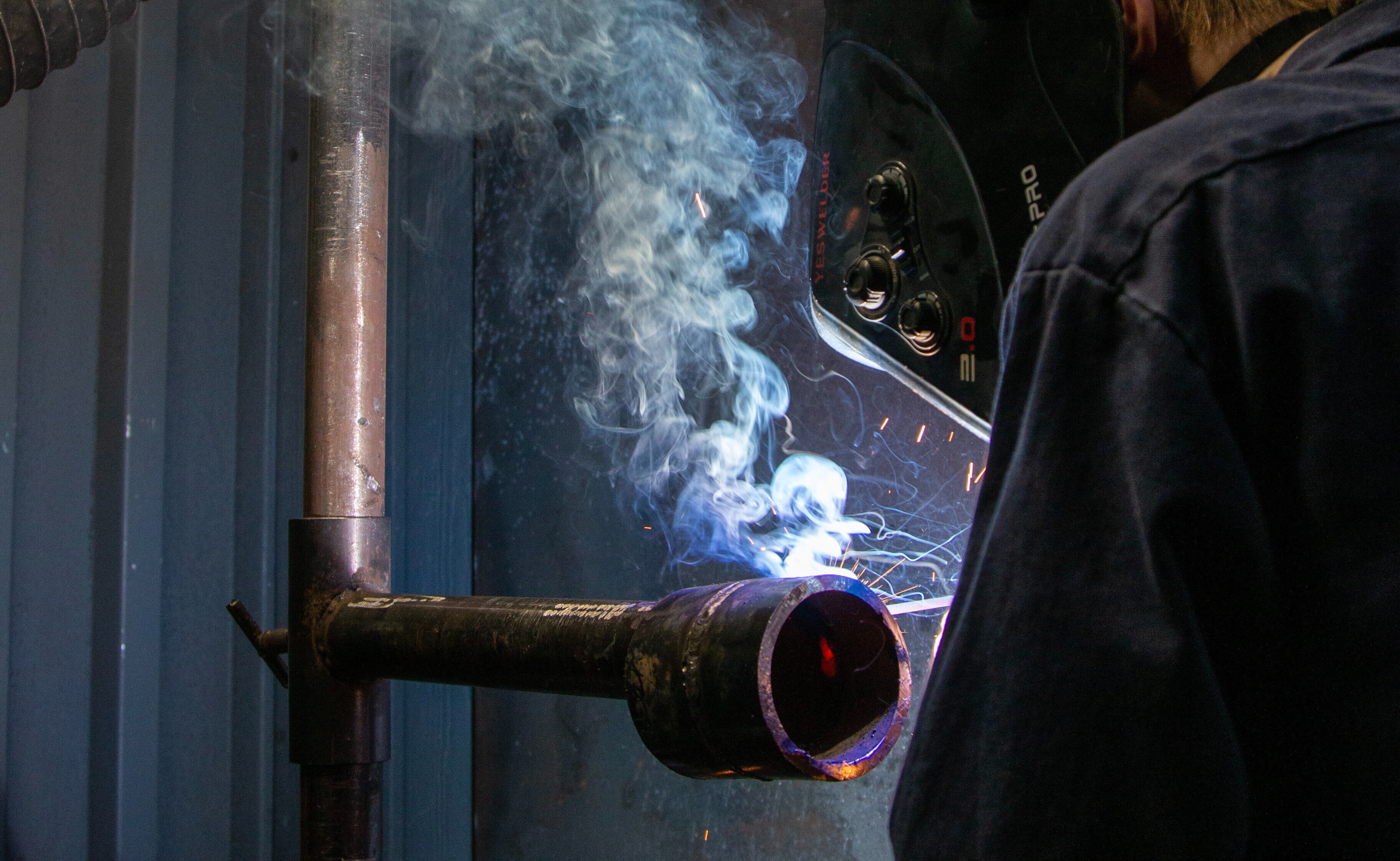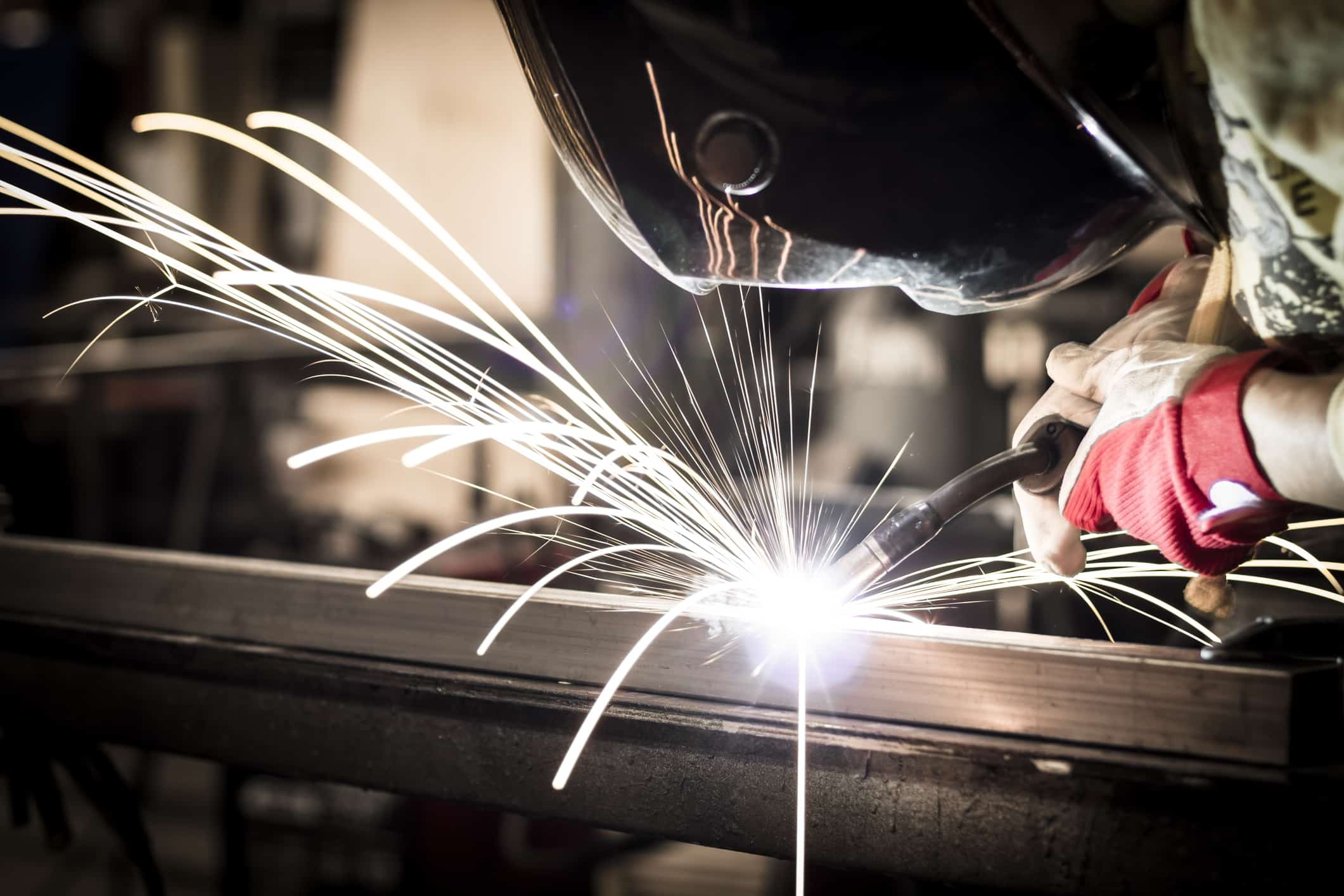All Regarding Welding: Trick Insights Into Techniques and Finest Practices for Success
Welding encompasses a selection of methods, each matched for certain products and applications. Recognizing these approaches, such as GMAW, SMAW, and TIG, is essential for achieving perfect outcomes. Furthermore, the right equipment and security methods can not be ignored. As prep work and fixing play important roles in the welding process, grasping these elements can greatly boost the high quality of the last product. What are the essential variables that assure an effective weld?
Comprehending Different Welding Techniques
Welding strategies encompass a selection of techniques, each suited to details applications and products. Among one of the most usual techniques are Gas Steel Arc Welding (GMAW), Protected Metal Arc Welding (SMAW), and Tungsten Inert Gas Welding (TIG) GMAW, additionally referred to as MIG welding, is prominent for its speed and versatility, making it ideal for slim materials. SMAW, or stick welding, is favored for its simplicity and performance in exterior atmospheres, particularly with thicker metals. TIG welding provides precision and control, making it ideal for detailed job and non-ferrous steels (Belgrade Welding). Each strategy has its unique advantages and factors to consider, enabling welders to select the very best technique based upon the project's requirements, product type, and preferred results. Understanding these strategies is crucial for successful welding
Necessary Welding Tools and Tools
While various welding strategies require certain abilities, the appropriate equipment and tools are similarly crucial for achieving high quality outcomes. Important welding devices includes welding devices, which differ depending on the technique-- such as MIG, TIG, or stick welding. Safety gear, consisting of safety helmets, handwear covers, and aprons, assurances security and convenience during the procedure. In addition, fixtures and clamps help protect products in position, making sure precision in welds. Consumables like welding rods, wire, and protecting gas are likewise critical components that affect the high quality of the weld. Additionally, devices such as cutters and grinders promote surface area preparation and post-weld completing, contributing to an expert result. Buying top notch tools ultimately enhances the efficiency and efficiency of welding projects.
Safety And Security Practices in Welding
Appropriate safety and security methods are essential in the welding market to protect workers from possible risks. Welders should use ideal individual protective tools (PPE), including helmets with appropriate shading, gloves, and flame-resistant garments. Adequate air flow is vital to lower exposure to damaging fumes and gases created during the welding procedure. Furthermore, workers ought to be learnt the proper handling of welding devices to avoid crashes. Fire precaution, such as keeping flammable products far from the welding area and having fire extinguishers conveniently offered, are required. Normal evaluations of devices and work spaces can assist identify potential threats before they lead to crashes. By sticking to these safety and security methods, welders can produce a much safer working environment and lessen risks connected with their profession.
Readying Materials for Welding
Preparing products for welding is an essential action that greatly influences the quality and stability of the last product (Montana Mobile Welding and Repair Belgrade Welding). Correct preparation involves cleaning the surface areas to eliminate pollutants such as oil, corrosion, and dirt, which can endanger the weld. Strategies such as grinding, fining sand, or using solvents are commonly used to achieve a tidy surface. Furthermore, guaranteeing that the materials mesh snugly is crucial; gaps can bring about weak welds. It's likewise vital to take into consideration the placement and positioning of the elements, as this will certainly impact the convenience of welding and the final end result. Picking the suitable filler material and making sure compatibility with the base steels is essential for achieving strong, long lasting welds.
Tips for Getting High-Quality Welds
Achieving premium welds needs interest to information and adherence to best practices throughout the welding process. Correct joint prep work is necessary, making sure surface areas are tidy and cost-free from pollutants. Picking the suitable filler product and welding strategy based on the base metals is vital for suitable bonding. Preserving regular travel rate and angle while welding can advertise and avoid defects uniformity. Additionally, managing warmth input is essential; excessive warmth can result in warping and Visit Your URL deteriorated joints. Frequently inspecting the welds during the process enables prompt modifications if essential. Finally, using appropriate post-weld therapies, such as cleaning and stress relief, can enhance the toughness and stability of the weld, ultimately ensuring an effective result.
Troubleshooting Common Welding Issues
Welding usually presents difficulties that can impact the high quality and integrity of the end product. Common issues such as porosity, inconsistent weld beads, and getting too hot can develop, each needing particular fixing strategies. Comprehending these problems is important for welders to boost their skills and attain suitable results.
Porosity Problems Explained
Porosity can typically be neglected, it stays a crucial problem in welding that can compromise the honesty of an ended up product. Porosity describes the presence of little gas pockets within the weld grain, which can damage the joint and lead to early failing. This issue normally arises from pollutants, dampness, or incorrect protecting gas insurance coverage during the welding procedure. To reduce porosity, welders must validate that the base products are clean and completely dry, use appropriate protecting gases, and preserve regular welding parameters. Regularly evaluating the tools and environment can also help determine potential concerns prior to they manifest in the click for more info weld. Dealing with porosity successfully is essential for accomplishing strong, durable welds that meet high quality requirements.

Inconsistent Weld Beads
Irregular weld grains can greatly influence the top quality and stamina of a completed item. Different factors add to this issue, consisting of improper traveling rate, wrong amperage settings, and irregular electrode angles. When the welder moves also swiftly, a grain might appear slim and lack penetration, while moving as well gradually can create excessive build-up. Furthermore, making use of the wrong amperage can cause either damaging or too much spatter, both of which concession weld integrity. The welder's technique, such as inconsistent torch activity, can likewise bring about irregular grain appearance. To minimize these troubles, welders need to concentrate on preserving constant, controlled activities and ensuring appropriate tools settings to achieve uniformity in their welds. Uniformity is vital to achieving reliable and strong welds.
Getting Too Hot and Bending Issues
Excessive warm during the welding procedure can result in considerable getting too hot and warping problems, influencing the structural honesty of the work surface. These issues commonly show up as distortion, which can endanger placement and fit-up, making additional setting up challenging. Factors contributing to overheating include the option of welding criteria, such as voltage and travel speed, along with the sort of material being bonded. To minimize these problems, welders must keep constant travel rate and ideal warm input while keeping track of the workpiece temperature. Furthermore, pre-heating or post-weld warmth therapy can help ease tensions triggered by fast cooling - Belgrade. Regular evaluation and adherence to finest methods are vital in preventing overheating and ensuring the durability and dependability of welded structures
Regularly Asked Questions
What Are the Career Opportunities in the Welding Sector?
The welding industry provides diverse occupation chances, consisting of placements as welders, educators, designers, and assessors. Professionals can operate in manufacturing, building, aerospace, and automotive fields, taking advantage of strong need and competitive wages in different roles.
Just How Can I Improve My Welding Speed Without Compromising Top Quality?
To enhance welding rate without sacrificing high quality, one should practice effective methods, maintain devices, maximize setups, and boost hand-eye control. Routine training and looking for feedback can likewise substantially add to attaining much faster, top notch welds.
What Certifications Are Offered for Welders?
Various qualifications exist for welders, consisting of those from the American Welding Culture (AWS), the National Facility for Building And Construction Education And Learning and Research (NCCER), and numerous industry-specific companies. These qualifications enhance employability and demonstrate ability effectiveness.
How Does Welding Affect the Characteristics of Metals?
Welding influences the buildings of metals by altering their microstructure, which can result in modifications in stamina, ductility, and solidity. Warmth input and air conditioning rates during the process greatly affect these material features.
Can I Bonded Dissimilar Metals With Each Other?
